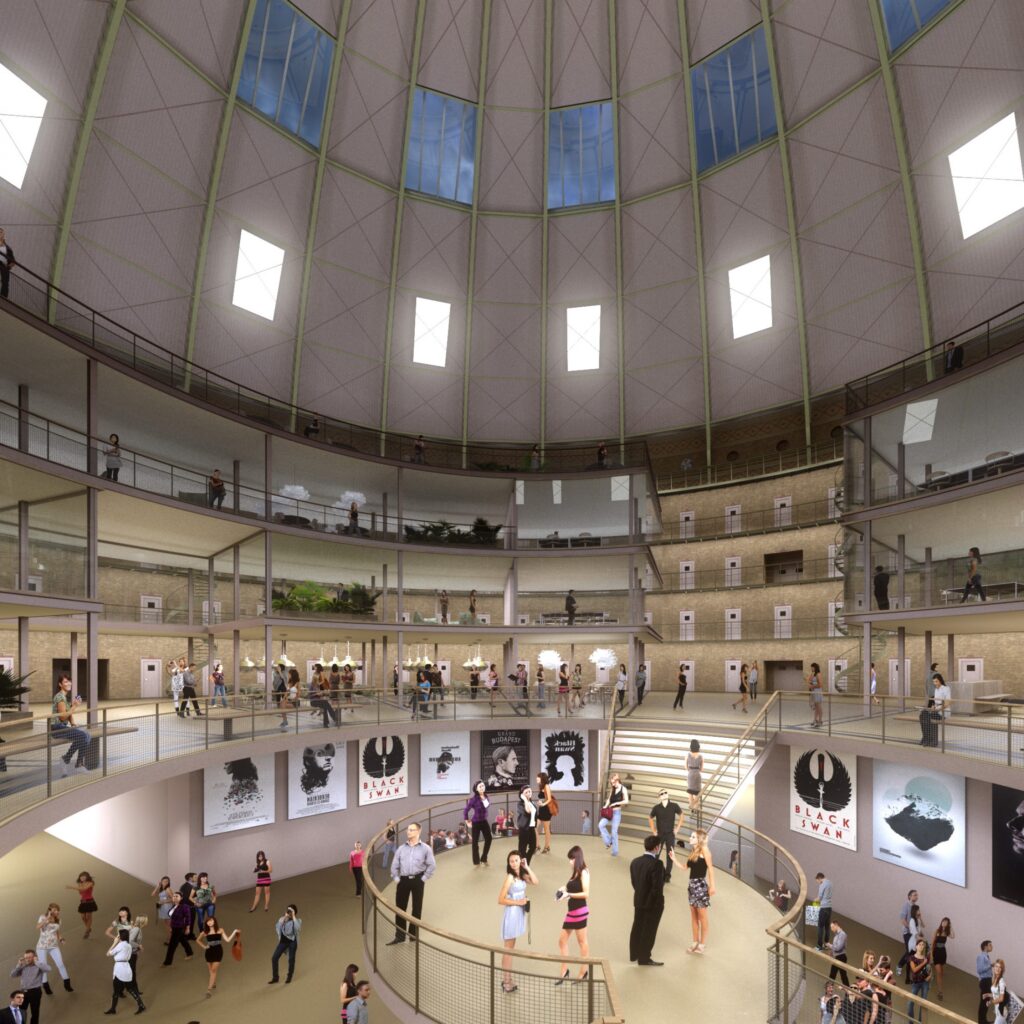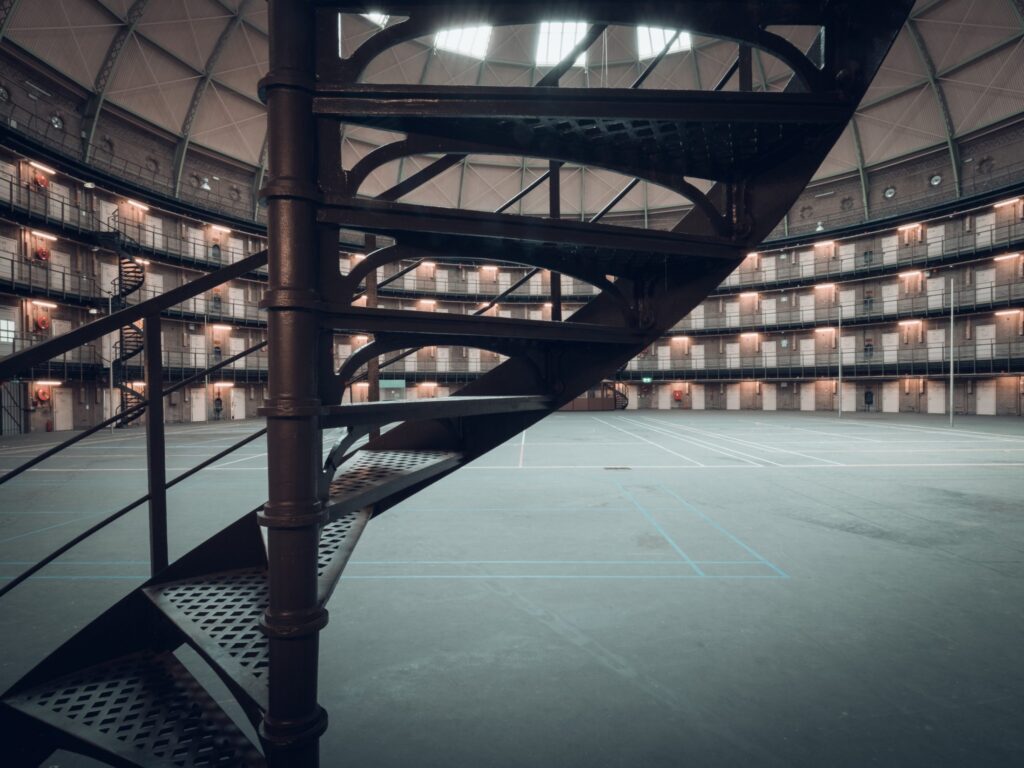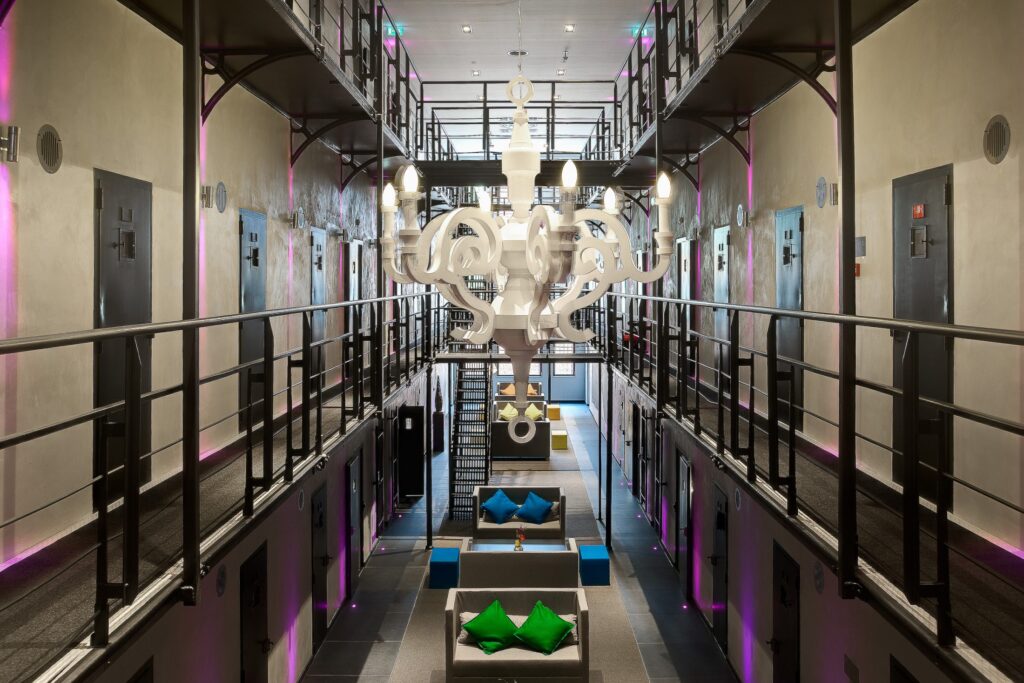Why the Dutch Are Closing Prisons – and What They’re Doing with Empty Ones
EUROPE, 13 Dec 2021
Deborah Nicholls-Lee | Positive News – TRANSCEND Media Service
7 Dec 2021 – The Netherlands has reduced its prison population to such a degree that it’s now turning old prisons into socially useful buildings, such as schools and refugee centres. What went right?
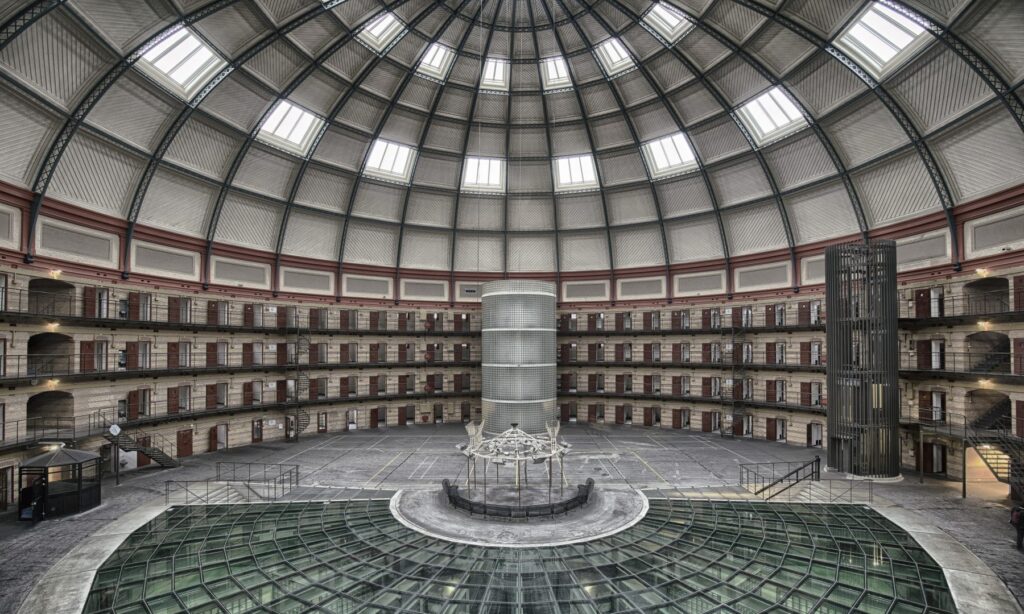
The former Boschpoort prison in the city of Breda is now the FutureDome entertainment venue. Credit: Prison Escape
A vast X-shaped building marks the spot on an Amsterdam map that has brought a decade-long search to a close.
Spread across three maxed-out campuses, with almost 1,000 students on roll, the British School of Amsterdam had struggled to keep up with the capital’s growing demand for international education. That was until it found the striking 14,000m2 property, which it moved into in April.
The site had many advantages, not least its security, because − until recently – it had in fact been a prison. What is now the school’s freshly painted theatre with shiny chestnut-coloured beams was, until 2013, the prison chapel. And the mirrored dome at the building’s heart was a way to survey the four corridors branching out from it.
“We’ve kept the wings. They just worked really well for each of the school sections,” explains the school’s communication manager Lisa Harrison, who says the cheerful atmosphere in the building “surprises everyone”.
It is the latest example of prison buildings in the Netherlands being repurposed, often in socially useful ways. Just 20km away, in Haarlem, the former De Koepel prison is being converted into a multi-purpose site to include student accommodation and social housing – answering a national shortage of both.
Meanwhile in the province of Drenthe, the National Prison Museum, housed since 2005 in a former penal colony, aims to open up a nuanced conversation on crime and punishment, as well as sharing its gruesome history.
Quirkier uses have also been found. Utrecht’s Wolvenplein created a city beach within the steep walls of its exercise yard, while − before its demolition − Amsterdam’s Bijlmerbajes provided employment for some of the asylum seekers temporarily housed there, by converting 15 cells into a Syrian hammam.
As the UK embarks on its largest prison building programme in over a century, with prisoner numbers almost doubling in the last 30 years, the prison population in the Netherlands is going in the opposite direction. Apart from a small rise in the past three years, it has otherwise been steadily shrinking. Today, the incarceration rate per capita is half the UK’s; there are far fewer repeat offenders; and reported crime continues to decline. At times, the Netherlands has even resorted to importing convicts from abroad to fill its empty cells and keep some prisons open.
But while the British government dishes out the most life sentences in Europe, under the leadership of a prime minister who says he is keen to see hi-vis chain gangs introduced, the Dutch see the benefits of a less punitive approach. (Only around 30 people there are serving life sentences.)
Reeling from the Nazi occupation during the second world war, the Netherlands had “a strong sense of the dangers of an overbearing state and the horrors of imprisonment”, explains Francis Pakes, a Dutch national and professor of criminology at the University of Portsmouth. This meant that prison sentences were used more sparingly than before the war, and detainees were usually treated with greater humanity.
“In the UK, to be tough on crime is framed as a solution against a threat of disorder,” says Pakes. “Whereas in the Netherlands [historically], crime was just something the system had to respond to.” The decriminalisation of soft drug use and sex work (in 1976 and 2000 respectively) reflects this pragmatic approach, while investment in youth intervention schemes, electronic tagging, and residential care for offenders with addictions and mental health problems has promoted rehabilitation and minimised prison time.
“In the Netherlands [compared to the UK], the prisons are − by and large − better maintained, better staffed, more spacious and more decent places,” explains Pakes. These are all factors that, studies have shown, make offenders’ successful reintegration into mainstream society more likely.
Low rates of poverty, high social security and a relatively unmaterialistic culture – in the Netherlands, being unshowy about wealth and living simply are generally valued traits – all play a role in reducing crime. And, the lack of minimum sentencing means that lengthy jail spells – which Dutch research links to higher reoffending rates – are rare.
Amsterdam-based musician, author and social entrepreneur Rivelino Rigters knows at first hand the downside of incarceration. Fatherless and seeking the approval of older boys, he got caught up in drug-selling and theft, and was serving his first prison sentence at the age of 13. But prison only enhanced his criminal connections, he says. “I actually came out worse than before I went in.”
“Locking someone up is not a way to solve the problem,” Rigters insists. “Sometimes it only makes it bigger because, for some people, crime was either their last resort or there was no other way to make a living.”
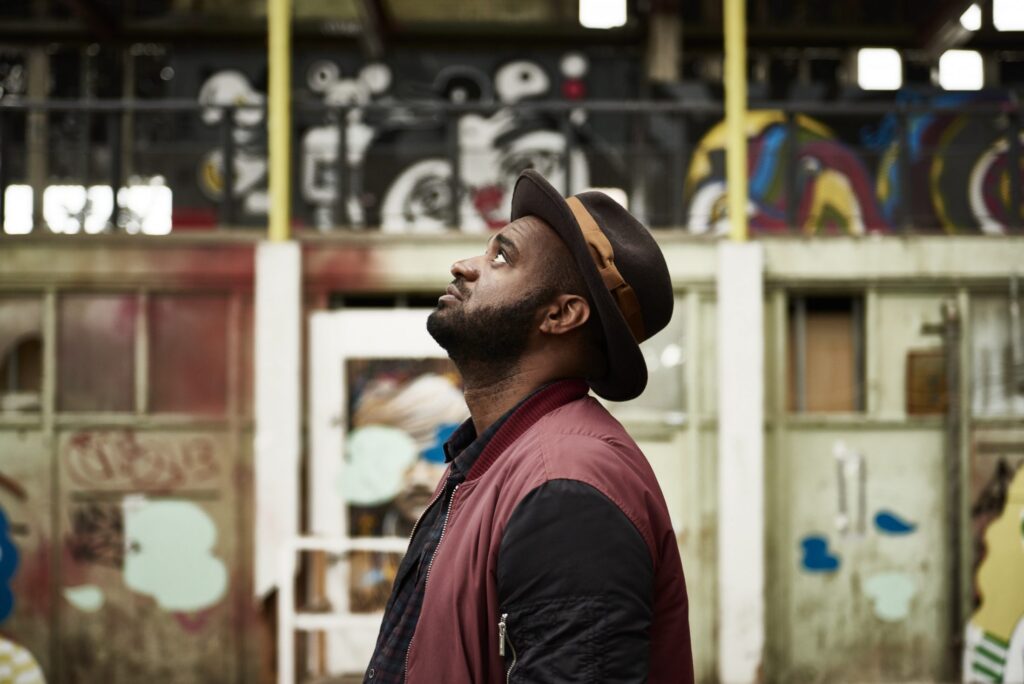
Musician, author and social entrepreneur Rivelino Rigters has spent time in jail but now mentors prisoners. Image: Hazazah Photography
Instead, Rigters’ organisation Criminal Minded, which mentors current and ex-prisoners to access the skills and networks they need to rebuild their lives, is typical of the more personalised approaches now being trialled. It focuses on offenders’ “strengths, talents and possibilities” and “what needs to be healed in order for them to take positive steps forward”.
The prison-based model of justice may have served its time, believes Pakes. “What you find in the Netherlands when you talk to senior police officers, prosecutors or judges, is that very few people have anything positive to say about the effect of imprisonment,” he says. “Nobody really believes it works.
“We now know better that if you want to turn those lives around, simply being punitive is not going to cut it,” Pakes concludes. “It needs something much more wholesome than that.”
Three Repurposed Dutch Prisons
- A night in the nick – the hotel and restaurant
In the city of Roermond, buildings now occupied by the Hotel Het Arresthuis and its Michelin-starred restaurant Damianz formed a state prison from 1863 to 2007. It detained mostly drug smugglers and illegal immigrants in its final years. Grouped around original cast iron stairways and balconies, the rooms range from ‘comfort cells’ to a luxurious suite.
- The lock-up that’s looking up – the business centre and library
The moated entrance and formidable spires of the Blokhuispoort prison in the city of Leeuwarden now welcome visitors to a cultural business centre. It’s designed to boost investment in a province with the lowest GDP nationally. The Alibi hostel, with its barred windows, offers affordable accommodation, while the transformation of the prison chapel into the city’s central library was completed earlier this year.
- Gluttons for punishment – the escape game
Beneath the gigantic panopticon of Boschpoort penitentiary, a cast of 80 actors lead 400 ‘inmates’ in orange scrubs through an adrenaline-filled escape experience. Elsewhere in and around the building – rebranded the FutureDome – spaces have been used as a meeting centre for people with autism, temporary housing, a pop-up theatre and an ice rink.
Go to Original – positive.news
Tags: Amsterdam, Humanism, Humanity, Justice, Netherlands, Prisons
DISCLAIMER: The statements, views and opinions expressed in pieces republished here are solely those of the authors and do not necessarily represent those of TMS. In accordance with title 17 U.S.C. section 107, this material is distributed without profit to those who have expressed a prior interest in receiving the included information for research and educational purposes. TMS has no affiliation whatsoever with the originator of this article nor is TMS endorsed or sponsored by the originator. “GO TO ORIGINAL” links are provided as a convenience to our readers and allow for verification of authenticity. However, as originating pages are often updated by their originating host sites, the versions posted may not match the versions our readers view when clicking the “GO TO ORIGINAL” links. This site contains copyrighted material the use of which has not always been specifically authorized by the copyright owner. We are making such material available in our efforts to advance understanding of environmental, political, human rights, economic, democracy, scientific, and social justice issues, etc. We believe this constitutes a ‘fair use’ of any such copyrighted material as provided for in section 107 of the US Copyright Law. In accordance with Title 17 U.S.C. Section 107, the material on this site is distributed without profit to those who have expressed a prior interest in receiving the included information for research and educational purposes. For more information go to: http://www.law.cornell.edu/uscode/17/107.shtml. If you wish to use copyrighted material from this site for purposes of your own that go beyond ‘fair use’, you must obtain permission from the copyright owner.
